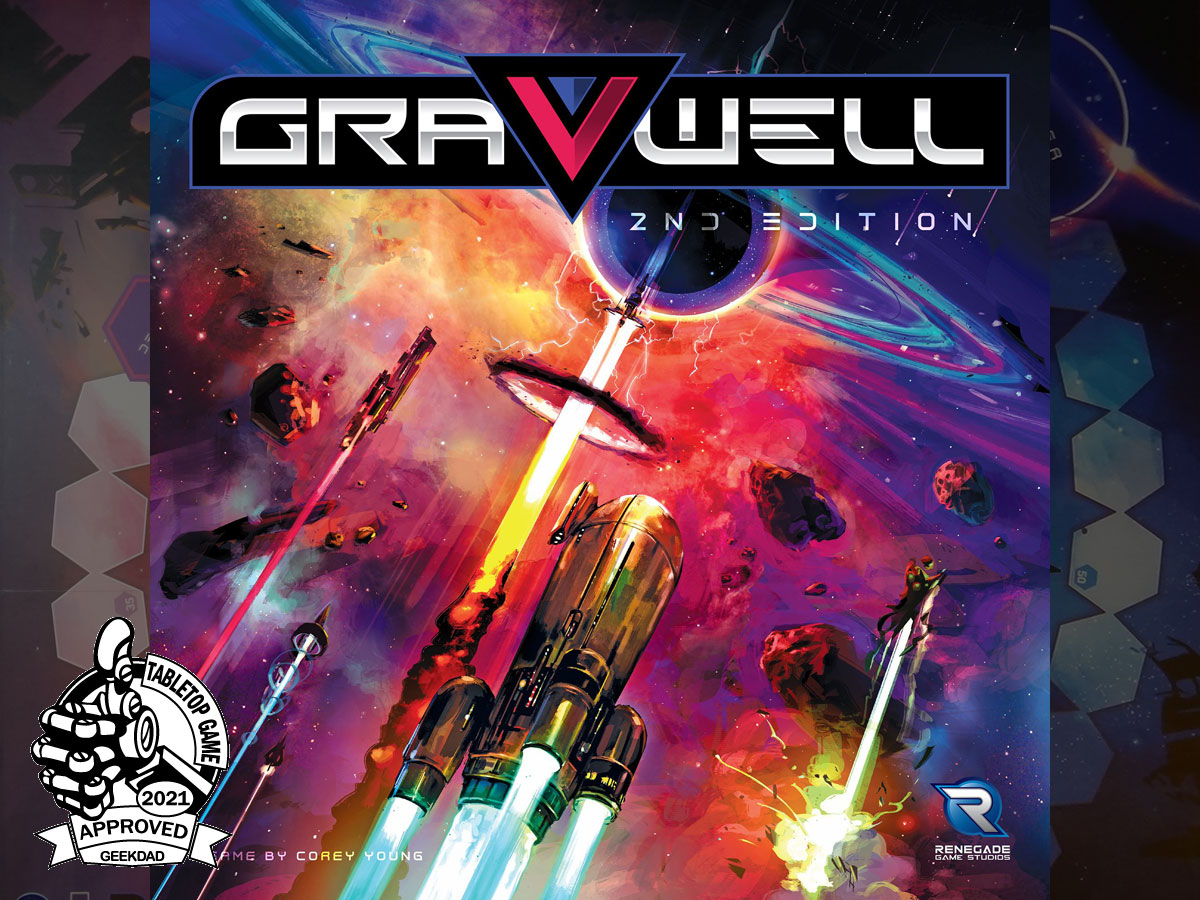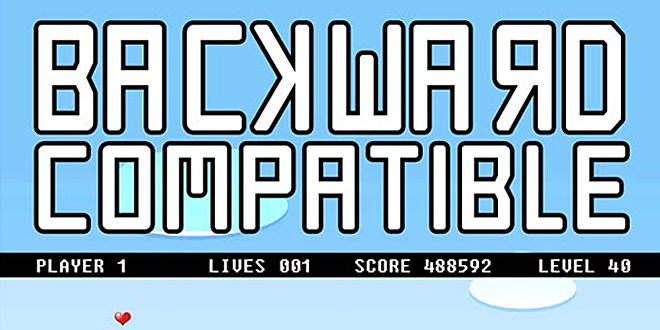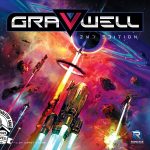
You’ve survived the black hole, but your engines are dead and you’re drifting in space. Can you slingshot your way to safety with your tractor beams?
What Is Gravwell 2nd Edition?
Gravwell 2nd Edition is a race game designed by Corey Young for 2 to 6 players, ages 10 and up, and takes about 30–45 minutes to play. It was originally published in 2013 by Cryptozoic, and then got picked up by Renegade Games. This new edition from Renegade has been reworked, expanding to 6 players (from the original 4), adding ship powers, and new illustrations by Kwanchai Moriya. It retails for $45 and releases September 22; it’s available for preorder directly from Renegade or you can look for it in game stores soon.
I’ll give a thorough review for those who are new to the game, but if you’re just looking for a comparison to the first edition Gravwell, skip ahead to the “What’s New” section of this post!

Gravwell 2nd Edition Components
Here’s what comes in the box:
- Game board
- Round tracker
- 6 Spaceship miniatures
- 24 Ship Ability cards (4 per ship)
- 2 Space Junk tokens
- 40 Fuel cards
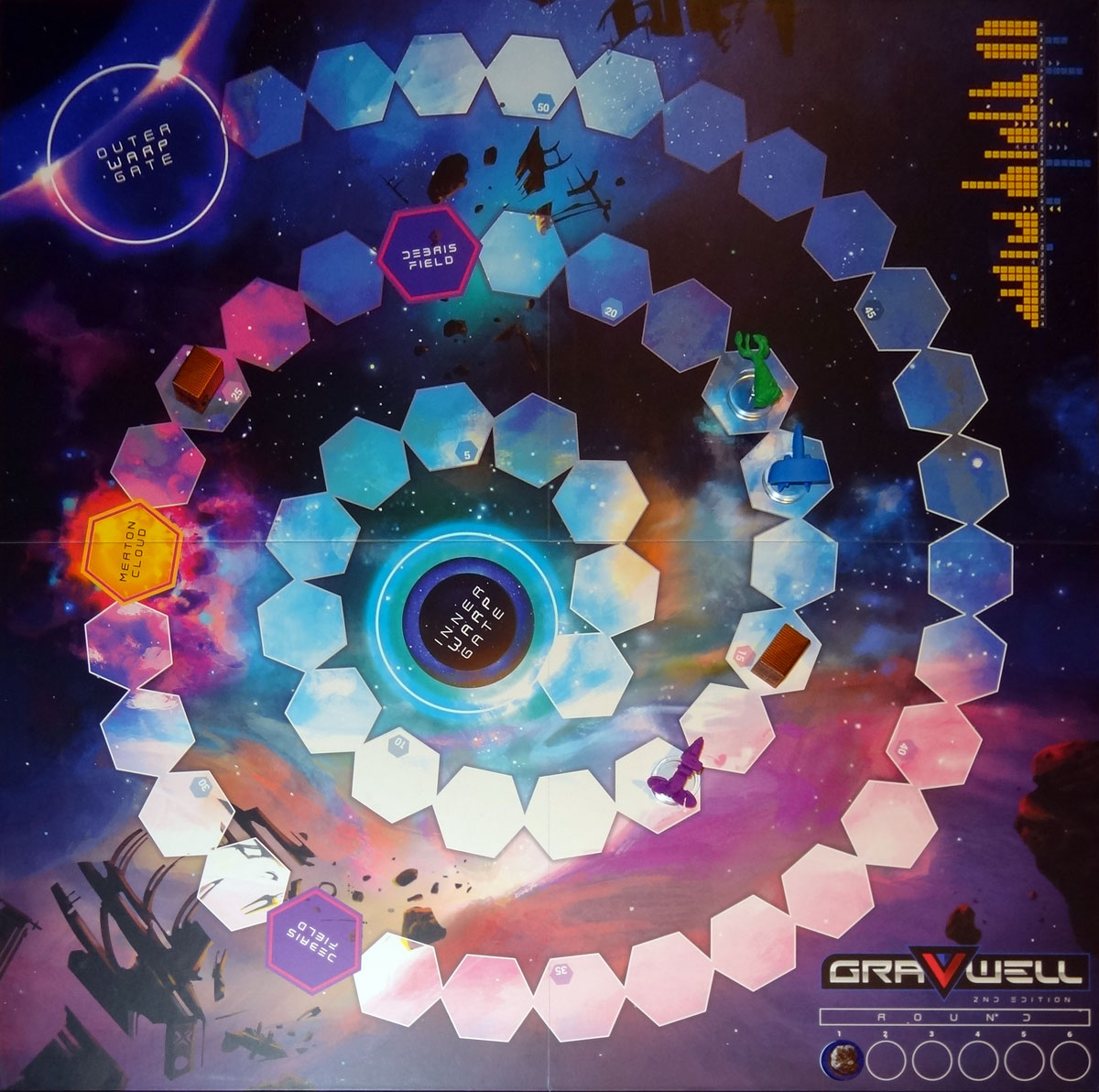
The game board shows a big spiral made of hex spaces, with warp gates on either end; every fifth space is numbered, and there are also two spaces marked “Debris Field” on the path, and a “Merton Cloud” at the center point of the path. The board’s background is a big colorful space field with some space wreckage, illustrated by Kwanchai Moriya. I really love his artwork, but there’s not a lot of it in the game itself other than the board and the box cover—I wish there were more!
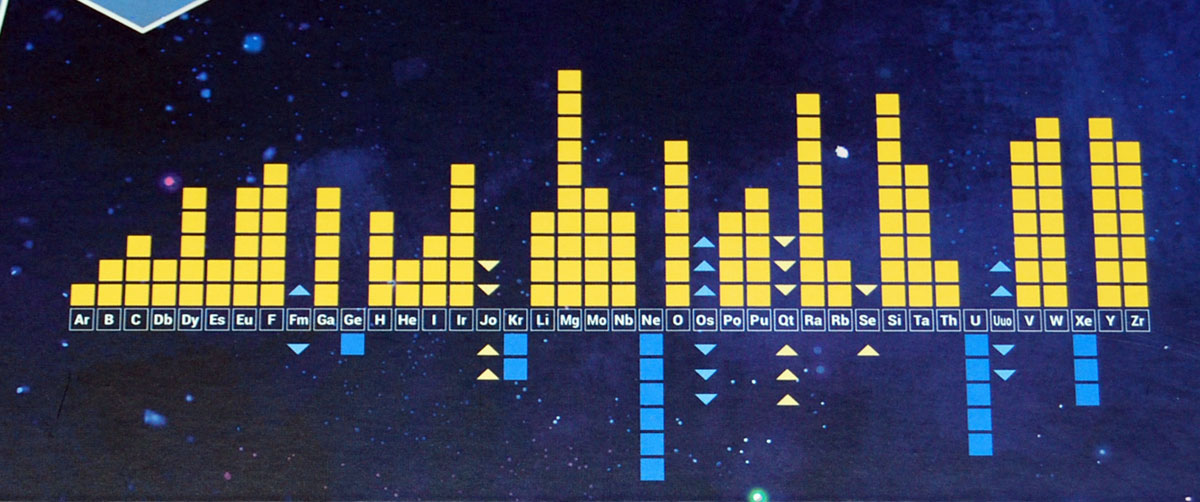
The board also includes a simple tracker next to the logo, and in another corner there’s a chart that shows the effects of all of the fuel cards in the game. This is probably my only big complaint about the new edition over the old edition. The old edition had a similar chart, but printed in two opposite corners of the board to make that information more accessible to all players. But the bigger complaint is that the colors on this chart are inexplicably unrelated to the colors on the cards. The first edition had little colored bars that indicated the direction and distance the cards would move you, and the colors of the bars matched the corresponding cards. The 2nd Edition chart has yellow squares for the blue cards, blue squares for the red cards, yellow triangles for the purple cards, and blue triangles for the orange cards. There is still a correspondence between these bars and the direction and the amount that the card will move you, but it’s extremely confusing why the colors don’t match (and that’s not even mentioning the fact that the cards themselves have squares, triangles, and circles on them that don’t all line up with the chart). The only thing easier to read about the new chart is that it actually shows all the letters, as opposed to just having “A” and “Z” labeled on the ends.
Each of the fuel cards represents an element (using the one- or two-letter abbreviation), and has a numerical value. There are also four different card colors that indicate the type of movement, which is also denoted by a shape (square or circle). The original game had 26 cards, one for each letter of the alphabet, and the second adds more cards that are used only in a 5–6 player game.

The spaceship miniatures are colored plastic, mounted on a transparent base and post, and each of the six ships is unique. There’s one that reminds me of the Planet Express ship from Futurama, and another one that looks sort of like a slice of pizza with tentacles. Each ship actually has a name and description in the back of the rulebook, giving you a bit of theme that’s tied to their powers. The space junk (which replaces the derelict ships in the first edition) are orange wooden blocks painted to look like a Renegade Games shipping container—I know shipping conditions are really hard these days, but hopefully none of your Kickstarter rewards are floating out in space somewhere.

Each ship has four ability cards, and the cards have different designs that match the ships—it’s a fun detail that helps differentiate the ships a little more. Not only that, but each of the four cards have their own design, as if they’re different parts of the console, which was a pleasant surprise.

The box has a plastic insert to hold everything in place—nothing super fancy, but it’s a welcome upgrade from the simple cardboard channel insert from the original. One note: the wells for the spaceships are actually not all the same size, which means the ships don’t all fit perfectly in every well—I really should have labeled them when I first opened it. The box itself is slightly wider and shallower than the first edition box.
How to Play Gravwell 2nd Edition
The Goal
The goal of the game is to be the first to escape through the warp gate—or at least get the closest by the end of 6 rounds.
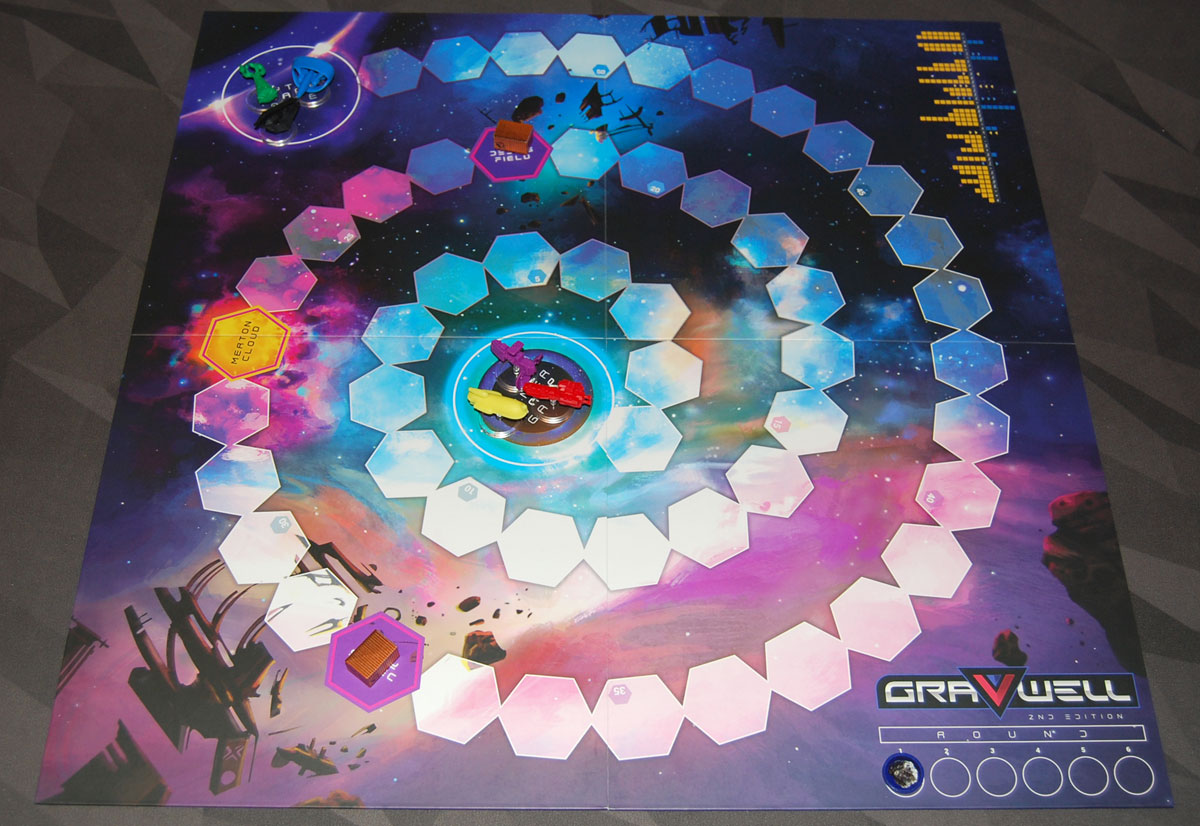
Setup
Place the round marker on the first space on the board. The space junk starts on the debris field spaces, one on each. Everyone gets a ship and the 4 matching ability cards. Everyone turns their “Emergency Stop” card to the “Charged” side, and the others face-down. For 2–4 players, everyone starts at the inner warp gate; for 5–6 players, everyone chooses a gate, with no more than 3 ships per gate.
Shuffle the fuel cards; for 2–4 players, remove the ones marked with the “no” symbol. Deal 6 cards to each player, and set the rest aside.
Gameplay
Each turn, everyone simultaneously chooses a fuel card to play from their hand face-down, and then they’re revealed simultaneously. The cards are then resolved in alphabetical order. The idea is that since your ship’s engines are down, you’re using tractor beams and repulsor beams to push and pull your ship, based on the nearest source of gravity—other ships or space junk.
Tractor beams pull you toward the nearest object, and repulsor beams push you away from the nearest object. (Note that objects in the warp gate don’t have any gravity and don’t count.) There are also multipoint beams that move everything else (including the space junk) while you stay in place. Each space (other than the warp gates) can only hold one object, so if you would land on an occupied space, you just keep drifting in the same direction to the next available space.
After all of the chosen cards have been resolved, they’re set aside and everyone chooses another card to play. When everyone has resolved all six cards in their hand, the round ends.

Before the subsequent rounds, players will “mine” for elements, drafting card piles from a market. You shuffle all the fuel cards, and then make piles of two face-up cards and 1 face-down card, enough for every player to take two piles. The player closest to the Merton Cloud mines first, and then determines the direction (clockwise or counterclockwise) that players take turns mining.

Each player has four ability cards. Everyone has an Emergency Stop card, but the rest are unique to the players. Each card charges up if you meet the requirements shown on the back—things like ending movement in a particular place or drifting over other objects—and then may be flipped over to use it once charged. The Emergency Stop lets you ignore the fuel card you’ve played this round, staying put. It also gets charged for free at the end of the round; if you haven’t used it, then you may charge one of your other cards for free.
Game End
If any player reaches the opposite warp gate from their starting location, they win immediately.
Otherwise, the game ends at the end of six rounds, and the player closest to their destination wins; there are no tiebreaker rules.
What’s New in Gravwell: 2nd Edition
When I heard that Renegade was publishing a new edition of Gravwell, I was very curious about what would be changed.

The board is slightly bigger, though the number of spaces on the path is the same. Instead of a singularity in the center and a warp gate at the end, both ends are now called warp gates (inner and outer), to accommodate the higher player counts when some players start at the opposite end. The introduction of the Merton Cloud space has pushed the two starting locations of the space junk a little further toward the ends of the path. I’ve already mentioned the new illustration and the new fuel card chart.
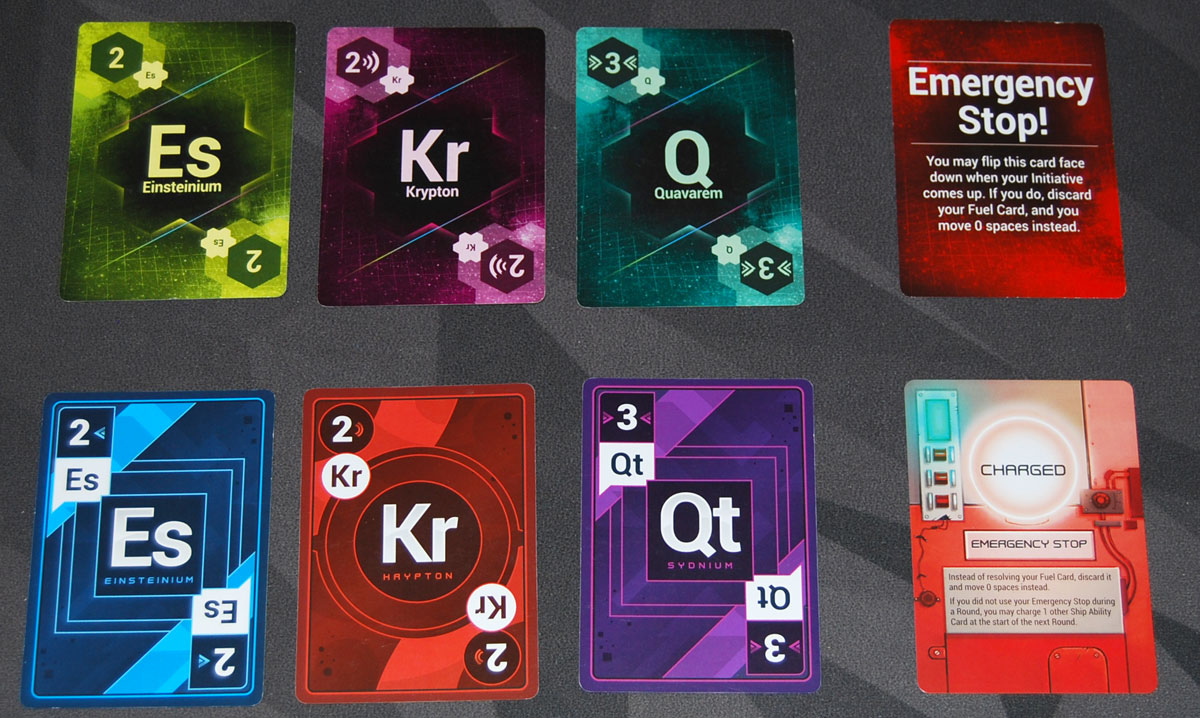
The fuel cards got some cosmetic changes, and I think I actually prefer the old cards slightly, though when it comes to the gameplay they’re mostly functionally equivalent. What did change is the addition of 14 more cards for the higher player counts, including the new multipoint repulsor that pushes everything away from you. (They also changed the name of some cards: “standard fuel card” is now a “standard tractor beam card,” and what used to be called “tractor beam card” is now “multipoint tractor beam card.”)

The ship models are a cosmetic change, but it also helps differentiate the ships for anyone with color vision issues, and I like that they look more like spaceships now than some sort of fighter jet. Replacing the derelict ships with orange wooden blocks isn’t quite as exciting—probably helped keep the total plastic about the same—but I did get a kick out of the shipping container look.
The two big changes to the gameplay are the increased player count and the unique player abilities.
For the player count, increasing to 5 or 6 players adds more cards, and it also starts players off in different locations, which has some odd results. Early in the game, it feels about the same as a 2- or 3-player game (depending on how many ships are with you at your starting gate), because the other ships are generally too far away from you to matter, except in those instances where you’re perfectly centered between the two nearest objects. (You break ties by counting total number of objects on either side.) But as the two groups start to intersect and merge, things get weird. Because of the way movement is sort of rubber-banding people back and forth, you can get pairs of ships leapfrogging together and separating from the others. Two players who get a bit of distance from the rest of the pack might end up gravitationally linked to each other, even if they want to be headed in opposite directions, which can result in one player being dragged the wrong way. Since I like Gravwell for its moments of chaos, I lean toward “that’s a feature, not a bug”—but then again, I wasn’t the one who ended up back near my starting location.

The other major change is the ship powers, which change the feel of the game even if you’re playing with only 4 players (and thus using the original set of fuel cards). I generally like a little bit of asymmetry, so I enjoy the way that I can try out different abilities, each of which lends itself to a particular type of play. That said, if you have folks in your gaming group who always choose the same color, it means they’ll also always have the same set of abilities. There are powers that let you ram another ship instead of drifting past it, jump to some marked spaces on the board, cloak your ship, and grab onto another ship when it moves. Some powers let you manipulate the card that you played, others let you “time travel” by changing the order of resolution. Of course, if you prefer classic Gravwell, you can ignore all of the power cards and just give everyone the Emergency Stop card.
Gravwell 2nd Edition is GeekDad Approved!
Why You Should Play Gravwell 2nd Edition
I reviewed the original Gravwell back in 2013 and really enjoyed it, enough to put it on my Best Games of 2013 list. Without repeating myself too much, I’ll note that it can be pretty chaotic and hilarious. My plays of it have generally resulted in lots of laughter (and plenty of groans, too).
The trick, of course, is that your goal is to keep moving in a particular direction, but you’re at the mercy of the other objects surrounding you. The majority of the cards are tractor beams, so they pull you toward something. If you’re out in the lead, they’ll only pull you backward. Repulsor beams will do the trick, but there are only so many. So a lot of the time it becomes a matter of trying to take one step backward so you can take two steps forward—by getting somebody just ahead of you so you can get moving in the right direction again.
And, of course, a lot has to do with the order that the cards resolve, and that’s where you can see how diabolical Corey Young is. The biggest numbers happen in the middle of the alphabet, and the cards early in the alphabet have low numbers. So if you play an A, B, or C you can be pretty sure you’ll get to go first, but you’re only moving a few spaces, while an M will move you a whopping 10 spaces but quite possibly in the wrong direction.
If you’ve ever played Go Nuts for Donuts, you know how simultaneous card selection can turn into a mind game with the other players. I want to play this card, but I think you’re going to play that card, which means really I should play this one instead … and around in circles you go. At first it may seem totally random—and for newer players it probably will be—but with some experience you can start to get a feel for who might play what. If you’re good at card counting, you may also be able to remember what cards other players have drafted during the mining phase, which gives you some more information to work with as well. (Though, again, it would be nice if that darn chart on the board were better designed. The chart also does not indicate which letters are the ones removed with lower player counts.)
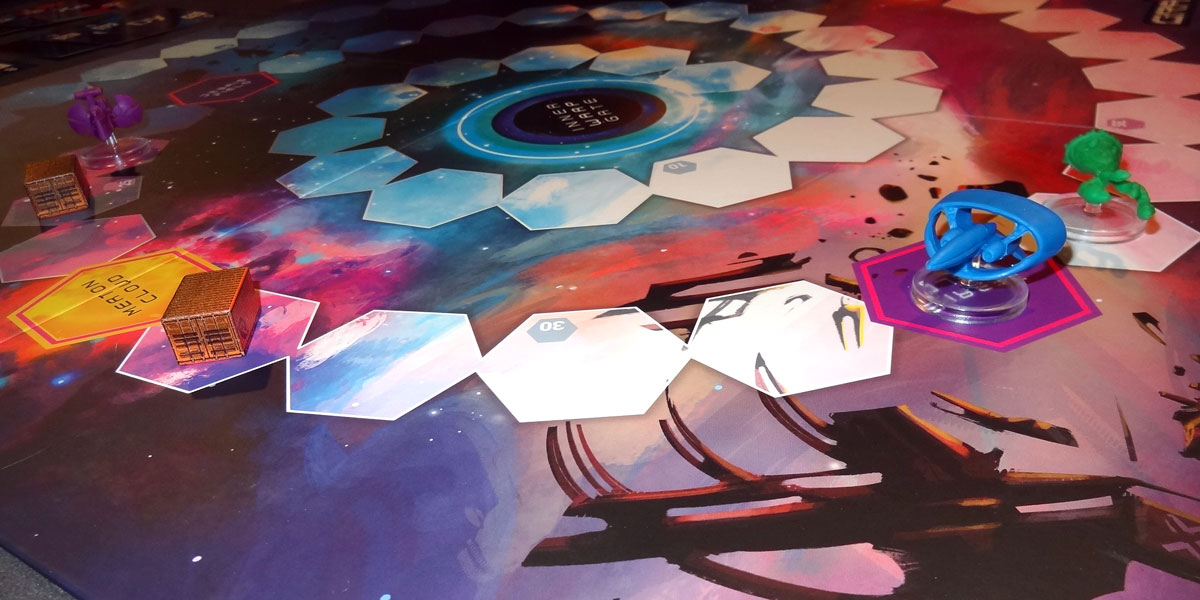
Gravwell is best for groups who don’t mind a bit of chaos, and for players who are okay when their strategies are disrupted. It’s more of a tactical game, where you have to make decisions based on the state of the board each turn. There’s a little bit of longer-term planning when you’re mining for cards, but even then you don’t always get what you want.
Playing Gravwell 2nd Edition was just as much of a blast as the original; I like that it can accommodate more players now, even though the dynamics of the game change a little at the higher player counts. I particularly enjoy the new ship abilities and the different tactics they open up. If you already own the original and you don’t usually have more than 4 players, you might not need the new edition (though the ship powers are fun). If you’re new to the game, though, I’d definitely recommend the 2nd edition for sure. Since the original edition was published before we established our GeekDad Approved system, I’m happy to award this new edition our seal of approval!
For more about Gravwell 2nd Edition, visit the Renegade Games website!
Click here to see all our tabletop game reviews.
![]() To subscribe to GeekDad’s tabletop gaming coverage, please copy this link and add it to your RSS reader.
To subscribe to GeekDad’s tabletop gaming coverage, please copy this link and add it to your RSS reader.
Disclosure: GeekDad received a copy of this game for review purposes.
Click through to read all of “‘Gravwell 2nd Edition’: Bigger and (Mostly) Better” at GeekDad.If you value content from GeekDad, please support us via Patreon or use this link to shop at Amazon. Thanks!
